Antony Hare is soft spoken as he recounts his journey from the fast-paced, big city life where he worked at ad agencies, to building a freelance business as an illustrator and animator.
And as he speaks, he slips between lighthearted laughter, and moments of vulnerable honesty.
While many may dream about the freedom of self-employment, Antony points out that it comes at a price – a never-ending hustle for your next job and the challenges of professional loneliness.
But even despite the trials and tribulations of a freelancer’s lifestyle, Antony’s work consistently rises to the top. Over the past 15 years, his award-winning illustrations have appeared in Vanity Fair, Harvard Business Review, The New Yorker, Toronto Life, and The New York Times.
In 2012, he opened AHPI Films to bring his signature style to the moving image, and subsequently became an award-winning animator.
Here he shares what it’s like to make the transition to self-employment, and how to work with an animator.
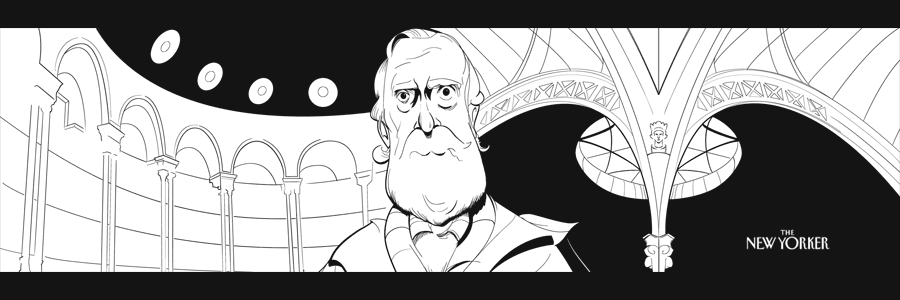
By Antony Hare, PI. Source: http://ahpi.ca/
Getting Started as a Freelance Illustrator
After working for several years as an art director at an ad agency, Antony couldn’t shake the feeling that he could be doing for himself, what he was doing for his clients.
So in the early 2000s, he decided to seek out work as a professional illustrator. His chief marketing tactic?
Sending out postcards.
“When I first started that’s all I did, I just wrote to everyone and anyone,” he says. “I used to subscribe to a newsletter called Mediabistro, which covered the who’s who in the media world, including who landed a new job and who moved on. I would write welcome cards to people who landed new gigs.”
Antony’s strategy had merit – his distinct artwork started to gather attention.
“Somehow – for better or worse – people were reacting to it,” he says. “I could tell that what I was putting out there was unique, because people would at least say ‘Oh, I haven’t seen something like that.’ I was gaining a little bit of success.”
After being published a few times, word started to get around.
“Once it started getting published that’s when others jumped on,” Antony says. “The world is pretty small, especially among the people who read the magazines I was getting published in. People would see the work and want to hire me so as not to miss out…but at the same time there are so many illustrators that no one gets a constant use. I’ve been lucky to have many years of relationships with people.”
The First Big Break
“It was 2007 or 2008. We’d just moved to London, Ontario (Canada), to a small apartment,” Antony says. “We had gotten married in 2006 and our expenses were very low, especially after living in Toronto for a few years and having some wedding money left over. This was the time for me to see if I could really give freelance illustration a go.”
“I had written a full-page letter to someone who had landed a new job at Esquire UK, and I’d included a full package of material, including an 8.5 x 11 illustration.”
“He wrote back the next week and said ‘Let’s do something.’”
“I was on cloud 9 for six months.”
“Completing the first big job was difficult and it wasn’t my best work – but it got the ball rolling and eventually I was in the magazine every month. Somehow that just blossomed into other jobs,” Antony says.
Art Direction from Clients is a Science
Even in a highly creative craft like illustration, the best way to build a solid rapport, like Antony has with his clients, is to ask for – and receive – firm direction.
According to Antony, the more specific the art direction, the better.
“I love to be directed – I think that suits this field,” Antony says. “I have my style and portfolio – you have the idea and the money. So the more you give me for story, or script, the happier I am. I’m just really making your vision real. The creative process is limited to the content, what’s inside, the subject, the subject matter and the sense that I get for the use.”
“While it may seem like direction could put someone ‘in a box,’ that box, which seems small, is actually huge and I know where the four walls are and I’m not stressed out.”
“In my past jobs working at agencies, I loved them because the work dynamic was so easy to understand – be good to your team, please your manager, make them look good. Listen to them and do what they say and maybe also offer your two cents.”
“In my world now, a beautiful brief and someone who is digging my style is the path to a successful job.”
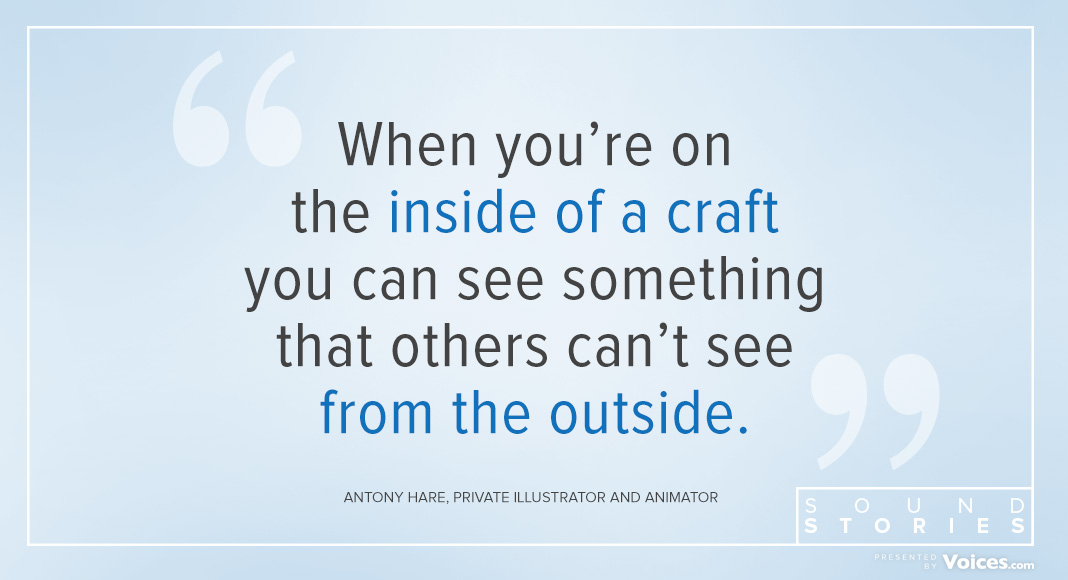
Getting Direction is Also an Art
Just because firm direction is best, it doesn’t mean that working with clients doesn’t involve intuition or guesswork.
“When I’m dealing with a professional art director they’re already thinking about use, but they don’t talk about it explicitly,” says Antony. “ Even though the final product is always on spec, I want it to be better. It’s up to me to be thinking about how I can make or deliver art that goes beyond their initial expectations.”
Going above and beyond means that Antony takes time not only to listen to what the client is saying – but to also pick up on the subtle queues of what they are trying to say as well. And just to make sure he gets it right, Antony allows clients to get a peek at the direction he’s taken.
“I often will show my client an example of what my pencil looks like, as well as how my pencil sketches tend to look once they’re ‘finished,’” he says. “That way, they’re not surprised when they see my pencil draft and can anticipate what the final product will look like.”
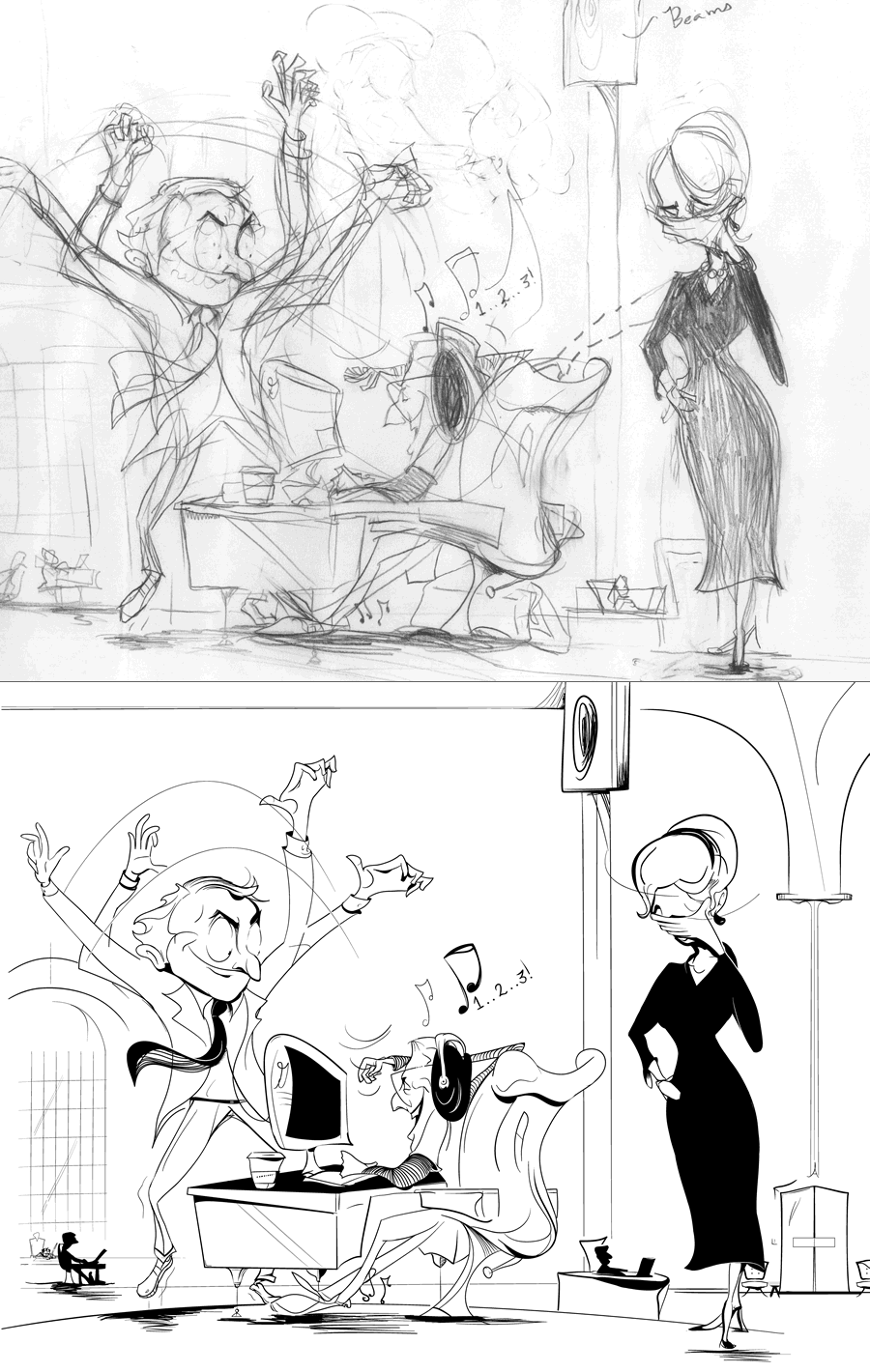
By Antony Hare, PI. Source: http://ahpi.ca/
The Illustration Process is Necessarily Messy
As he was starting out in his freelance career, one of Antony’s friends advised him that illustrators who were not able to be imitated offered the most value to their clients.
In this endeavor, Antony’s background in philosophy offered him the advantage of well-practiced critical thinking.
“What philosophy does it essentially teaches you a way of unpacking concepts and it doesn’t matter what the concept is – if it’s vector art or free will,” he says. “So I asked myself, ‘What am I doing – and why is it different from what everybody else is doing?’”
Although Antony’s illustrations look like they’ve been created in pen and ink, the end product is actually put together in Adobe Illustrator (vector art).
“I discovered that no one was using the brush tool [in Adobe Illustrator] like I was,” he says. “[With the tool] you can vary the stroke-width dynamically, with pressure sensitivity. I’ve used it when others haven’t, and the result is it’s hard to functionally recreate.”
But the brush tool isn’t the only trick up Antony’s sleeve.
“I also add errors in – both by accident and by purpose – all the time,” he admits. “I’ll overwork a part like the character’s hair and underwork another part, like the legs. After doing things like that for 10 years, you just pick up neural pathways. I’m sure it’s possible for someone to mimic it, but at the end of the day it’s largely impossible to recreate.”
Illustration vs. Photography
If a picture is worth 1,000 words, how do you decide which kind of picture to use?
While each has its merit, illustration offers a distinct advantage.
“One thing I tell people is that the nicest part of illustration is that the look, the style, and the actual content of the work is part of the message,” says Antony. “And while you could say that about other forms of art, like photography – it’s just so obvious when it’s a drawing. It sort of hits you over the head.”
“When I draw, I’m thinking about story, but it becomes a little more literal,” he adds. “I read a lot of comics growing up, and even though I’m not into them now – it translates into my work. I have a clean, elegant illustration and then throw in old tropes from the comic book world, like a dark cloud or a thought bubble, or icons to denote a meaning. For instance, in cases where the character in the office is a father, his mug will say #1 Dad. It sounds obvious, but I throw in those details.”
Animation Offers a Unique Way to Communicate
As another form of illustration, animation provides opportunities to add extra layers to the story.
“With animation, because there’s a script and a supplied voice over, it dictates so much,” he says. “I treat the story in a much more straightforward way to make sure that we’re showing the brand and all of the deliverables, but I’ll still throw in little details.”
“I can get away with adding more detail to scenes – I like to throw in Easter eggs so the audience gets something new each time they re-watch it.”
Keeping Creativity Alive While Freelancing
For many self-employed creatives, keeping the inspiration alive can be a challenge.
“To me, the writing is always on the wall,” says Antony. “I had a sense like maybe I was getting pigeonholed for my headshots and portrait work. Even though those pieces were becoming my allure, I remember thinking I can do that style on anything – not just faces. So around 2010 I started doing what I call ‘R&D.’”
“I started sketching wildly and personally, every day, watching tv, food, cartoons, comic strips, anything and everything. I’d animate on paper doing frame by frame – all to help develop my client work.”
“I don’t feel dissatisfied working for clients, I love work. You can even play in the first stage, with brainstorming, but then you have to get down to work. On the other hand, the free association and development time, while it’s aimed at helping me get more work, it’s not work yet – it’s just really fun.”
“I drew a burger and then got a job drawing the [Burger King] Whopper.”
“I don’t believe in perfection, but I do believe in excellence so that’s what I’m always focused on. If someone is to look at my work later when I’m gone, that’s the only thing I care about. Quality, cleanliness and not perfection.”
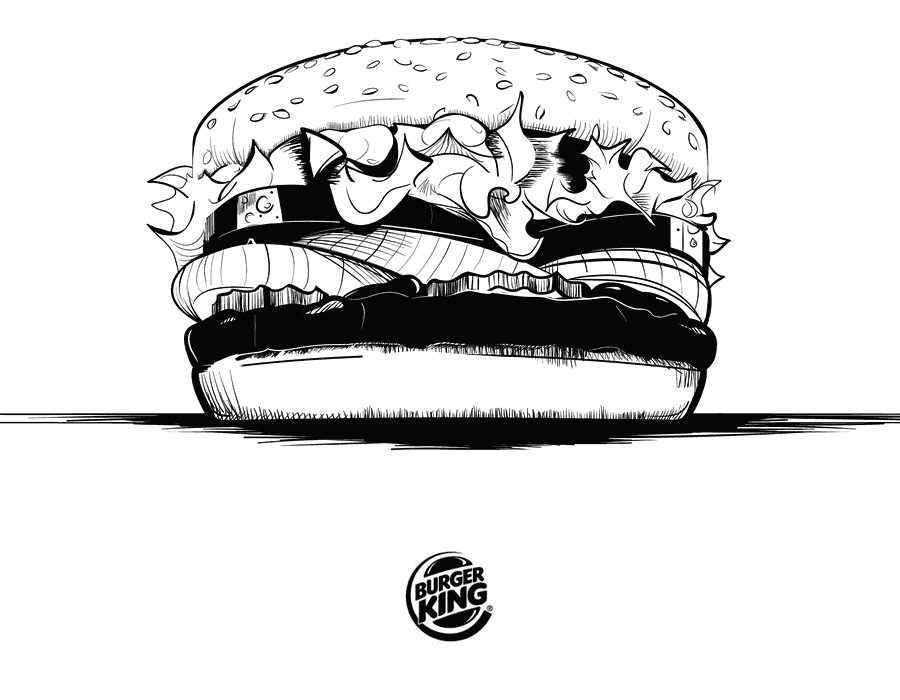
By Antony Hare, PI. Source: http://ahpi.ca/
Are you an Illustrator, Animator or a Freelancing Creative?
Whether you’re any of the above, or just fascinated by the creative life, you may enjoy listening to Antony Hare and other creative professionals on the Sound Stories Podcast.
And of course, if you’ve just stopped by on your way to finding the perfect voice, please check-out Voices!
About Antony Hare
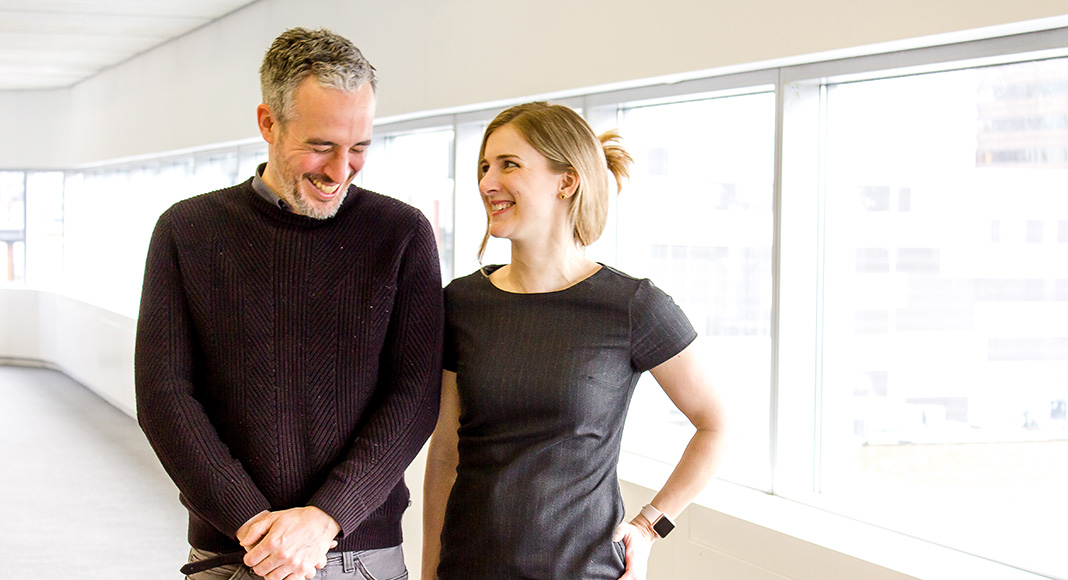
Antony Hare, Private Illustrator, and Voices Chief Branding Officer, Stephanie Ciccarelli.
Before becoming an illustrator, Antony worked as an Art Director for several interactive ad agencies on clients such as Downy, E*TRADE, Pedigree, CIBC, FOX, Chrysler, Ontario Craft Brewers, and Glade. Before that, his education culminated in a B.A. Hons. in Philosophy with Economics from the University of Western Ontario.
Today, Antony Hare’s work is published everywhere from Vanity Fair to Esquire, The New York Times to The New Yorker. Antony Hare Private Illustrator (AHPI) has also been commissioned by Atlantic Monthly, Forbes, and Report on Business.
Ant was featured in the Luerzer’s Archive 200 Best Illustrators Worldwide 07/08 and he’s been recognized by American Illustration, Creative Quarterly, Society of Illustrators, and the Society of News Design.
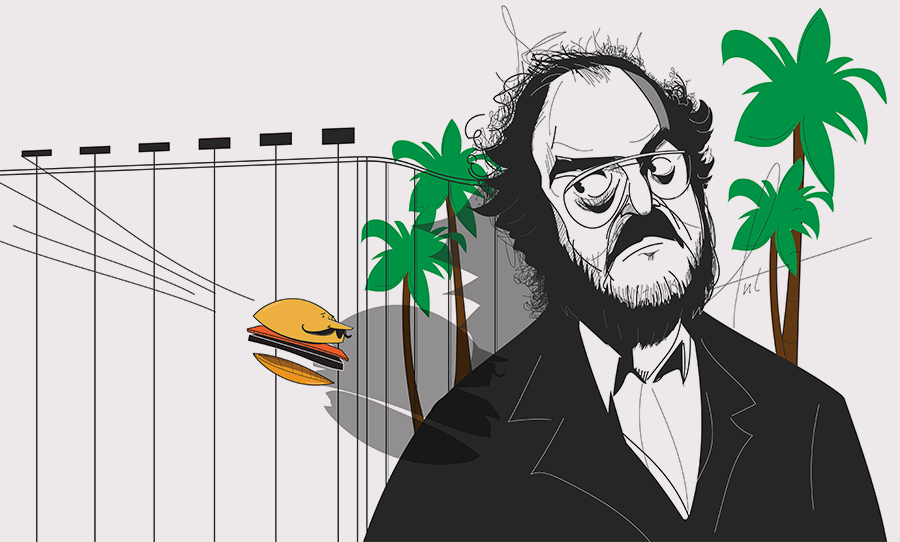
Leave a Reply